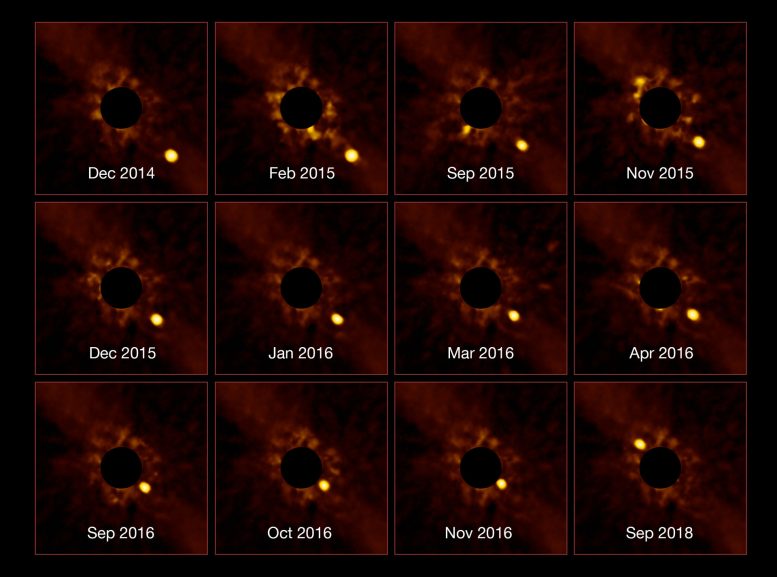
ESO’s Very Large Telescope (VLT) has captured an unprecedented series of images showing the passage of the exoplanet Beta Pictoris b around its parent star. This young massive exoplanet was initially discovered in 2008 using the NACO instrument at the VLT. The same science team since tracked the exoplanet from late 2014 until late 2016, using the Spectro-Polarimetric High-contrast Exoplanet REsearch instrument (SPHERE) — another instrument on the VLT. Credit: ESO/Lagrange/SPHERE consortium
ESO’s Very Large Telescope (VLT) has captured an unprecedented series of images showing the passage of the exoplanet Beta Pictoris b around its parent star. This young massive exoplanet was initially discovered in 2008 using the NACO instrument at the VLT. The same science team since tracked the exoplanet from late 2014 until late 2016, using the Spectro-Polarimetric High-contrast Exoplanet REsearch instrument (SPHERE) — another instrument on the VLT.
Beta Pictoris b then passed so close to the halo of the star that no instrument could resolve them from one another. Almost two years later, after seeming to merge into the image of the star, Beta Pictoris b has now emerged from the halo. This reappearance was captured again by SPHERE.
Stunning Exoplanet Beta Pictoris B Time-Lapse Images
ESO’s Very Large Telescope (VLT) has captured an unprecedented series of images showing the passage of the exoplanet Beta Pictoris b around its parent star. This young, massive exoplanet was initially discovered in 2008 using the NACO instrument at the VLT. Astronomers have since tracked the exoplanet, making observations from late 2014 until late 2016 using the VLT’s Spectro-Polarimetric High-contrast Exoplanet REsearch instrument (SPHERE). These observations are shown here as a time-lapse depicting the passage of Beta Pictoris b around its host star.
SPHERE caught sight of Beta Pictoris b by looking at it directly — not by inferring its existence. Most known exoplanets have been discovered using indirect methods — observing how they affect a star’s position or brightness. ESO’s SPHERE specializes in a method called direct imaging, hunting for exoplanets by taking their photographs. This extraordinarily challenging endeavor provides us with clear images of distant worlds such as Beta Pictoris b, 63 light-years away.
Beta Pictoris b orbits its star at a distance similar to that between the Sun and Saturn, approximately 1.3 billion kilometers, meaning it’s the most closely orbiting exoplanet ever to have been directly imaged. The surface of this young planet is still hot, around 1,500 °C (2,700 °F), and the light it emits enabled SPHERE to discover it and track its orbit, seeing it emerge from its passage in front of its parent star. Whilst a glance at these images might suggest that the planet transits the star, eclipsing a little of its light, Beta Pictoris b does not in fact quite transit. These images are a remarkable achievement, heralding a new era in one of the most exciting and challenging areas of astronomy — discovering and characterizing exoplanets.


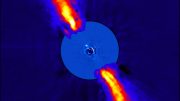

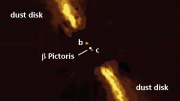

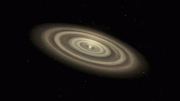
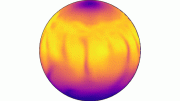
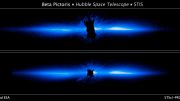
Carry over erath affined astroid as burned mistook as burned as Alien pace craft in fact the story is different
Citation:In understanding the philosophy of diagonalisation in matrics for different conjuctures as inspired by Einsteins geometical concept, INC0125595 for Ou
Citation:Electrons of opposite magneticfield as cross dynamics producing halls thrust in forming super conductive electrons a specific band widths formid space explosions:
“We were surprised to find ‘noncrossing electron orbits’ that do not cross the midplane, a finding contrary to conventional belief that all the particles cross the midplane (z=0) during magnetic reconnection, Reconnection occurs when the magnetic field lines in plasma — the collection of atoms and charged electrons and atomic nuclei, or ions, that make up 99 percent of the visible universe — converge and forcefully snap apart. Electrons that exert a varying degree of pressure form an important part of this process as reconnection takes place. Improvement of fusion facility performance. The process observed in MRX likely plays a key role in producing what are called “sawtooth” instabilities that can halt fusion reactions. Understanding the process could open the door to controlling it and limiting such instabilities. “How sawtooth happens so fast has been a mystery that this research helps to explain,” said Fox. “In fact, it was computer simulations of sawtooth crashes formed out of Halls thrust producing whistler waves out of electron reconnections that first linked electron pressure to the source of fast reconnection.In the first, fast reconnection takes place when magnetized electrons and demagnetized ions behave differently, causing a phenomenon called a Hall effect in the reconnection layer. In the second, a process called plasmoid instability breaks up thin current layers into magnetic islands that produce rapid reconnection (see related article here.) “Characterizing the plasmoid instability in a large laboratory plasma is a goal for future research, Formation of a thin current sheet has long been held to be a prerequisite for fast reconnection but an opposing cross dynamics requiring more research. one form of energy varies as a power of another by amplification in energy.
Scientists are closer than ever to unraveling a process called magnetic reconnection that triggers explosive phenomena throughout the universe. Solar flares, northern lights and geomagnetic storms that can disrupt cell phone service and black out power grids are all set off by magnetic field lines that converge, break apart and violently reconnect in ways that are not fully understood.
Researchers have captured a difficult-to-view singular event involving ‘magnetic reconnection’ — the process by which sparse particles and energy around Earth collide producing a quick but mighty explosion — in the Earth’s magnetotail, the magnetic environment that trails behind the planet.
Researchers at the University of New Hampshire have captured a difficult-to-view singular event involving “magnetic reconnection” — the process by which sparse particles and energy around Earth collide producing a quick but mighty explosion — in the Earth’s magnetotail, the magnetic environment that trails behind the planet.
Magnetic reconnection has remained a bit of a mystery to scientists. They know it exists and have documented the effects that the energy explosions can have — sparking auroras and possibly wreaking havoc on power grids in the case of extremely large events — but they haven’t completely understood the details. In a study published in the journal Science, the scientists outline the first views of the critical details of how this energy conversion process works in the Earth’s magnetotail.
“This was a remarkable event,” said Roy Torbert of the Space Science Center at UNH and deputy principal investigator for NASA’s Magnetospheric Multiscale mission, or MMS. “We have long known that it occurs in two types of regimes: asymmetric and symmetric but this is the first time we have seen a symmetric process.”
Magnetic reconnection occurs around Earth every day due to magnetic field lines twisting and reconnecting. It happens in different ways in different places, with different effects. Particles in highly ionized gases, called plasmas, can be converted and cause a single powerful explosion, just a fraction of a second long, that can lead to strong streams of electrons flying away at supersonic speeds. The view, which was detected as part of the scientists’ work on the MMS mission, had enough resolution to reveal its differences from other reconnection regimes around the planet like the asymmetric process found in the magnetopause around Earth which is closer to the sun.
“This is important because the more we know and understand about these reconnections,” said Torbert, “the more we can prepare for extreme events that are possible from reconnections around the Earth or anywhere in the universe.”
Magnetic reconnection also happens on the sun and across the universe — in all cases forcefully shooting out particles and driving much of the change we see in dynamic space environments — so learning about it around Earth also helps us understand reconnection in other places in the universe which cannot be reached by spacecraft. The more we understand about different types of magnetic reconnection, the more we can piece together what such explosions might look like elsewhere.
the ‘band gap’, a property well-known in semiconductor electronics: thanks to this ‘jump’ of energy levels that electrons are allowed to have, it is possible to control, switch and amplify current the inner part would work as an insulator, while conducting channels are formed at the edges. ‘Spintronics’, based on the spin movement of electrons, seems to be an attractive application are and a mid way selective twist between a magic angular phase twist may produce a super conductive particles. By varying the voltage on Halls thrust dynamical ejections
For the first reported asymmetrical event on October 16, 2015, and now this symmetrical event on July 11, 2017, NASA’s MMS mission made history by flying through magnetic reconnection events near the Earth. The four MMS spacecrafts launched from a single rocket were only inside the events for a few seconds, but the instruments which UNH researchers helped to develop were able to gather data at an unprecedented speed of one hundred times faster than ever before. As a result, for the first time, scientists could track the way the magnetic fields changed, new electric fields presented, as well as the speeds and direction of the various charged particles.
The ionized gas in space, called “plasma,” is so tenuous that the charged particles (ions and electrons) rarely collide with each other, but move in very complex ways due to the electric and magnetic fields. This process is highly nonlinear because as the electrons move, they carry the electric current which in turn changes the electromagnetic field. The self-consistent nonlinear motion of the particles and of the electromagnetic field is a complex system that is hard to predict.
“Magnetic reconnection occurs when you have two magnetic fields pointing in opposite directions and they annihilate each other. In the present case a large ambient magnetic field survived after annihilation occurred. Honestly, we were surprised that turbulent reconnection at very small scales could occur with this background magnetic field present. Earth’s magnetic field provides an invisible but crucial barrier that protects Earth from the solar wind — a stream of charged particles launched from the sun’s outer layers. The protective properties of the magnetic field can fail due to a process known as magnetic reconnection, which occurs when two opposing magnetic field lines break and reconnect with each other, dissipating massive amounts of energy and accelerating particles that threaten air traffic and satellite communication systems.
When two opposing magnetic field lines of fire ,water air and water fire and air break and reconnect with each other, out of cross dynamics and amplified dissipating massive amounts of energy and accelerating particles that threaten air traffic and satellite communication systems when two opposing magnetic field lines of fire ,water air and water fire and air break and reconnect with each other, out of cross dynamics and amplified dissipating massive amounts of energy and accelerating particles that threaten air traffic and satellite communication systems.
Journal Reference:
1. R. B. Torbert, J. L. Burch, T. D. Phan, M. Hesse, M. R. Argall, J. Shuster, R. E. Ergun, L. Alm, R. Nakamura, K. J. Genestreti, D. J. Gershman, W. R. Paterson, D. L. Turner, I. Cohen, B. L. Giles, C. J. Pollock, S. Wang, L.-J. Chen, J. E. Stawarz, J. P. Eastwood, K. J. Hwang, C. Farrugia, I. Dors, H. Vaith, C. Mouikis, A. Ardakani, B. H. Mauk, S. A. Fuselier, C. T. Russell, R. J. Strangeway, T. E. Moore, J. F. Drake, M. A. Shay, Yuri V. Khotyaintsev, P.-A. Lindqvist, W. Baumjohann, F. D. Wilder, N. Ahmadi, J. C. Dorelli, L. A. Avanov, M. Oka, D. N. Baker, J. F. Fennell, J. B. Blake, A. N. Jaynes, O. Le Contel, S. M. Petrinec, B. Lavraud, Y. Saito. Electron-scale dynamics of the diffusion region during symmetric magnetic reconnection in space. Science, 2018; eaat2998 DOI: 10.1126/science.aat2998
2. . W. Fox, F. Sciortino, A. v. Stechow, J. Jara-Almonte, J. Yoo, H. Ji, M. Yamada. Experimental Verification of the Role of Electron Pressure in Fast Magnetic Reconnection with a Guide Field. Physical Review Letters, 2017; 118 (12) DOI: 10.1103/PhysRevLett.118.125002
3. Ellen G. Zweibel, Masaaki Yamada. Perspectives on magnetic reconnection. Proceedings of the Royal Society A: Mathematical, Physical and Engineering Science, 2016; 472 (2196): 20160479 DOI: 10.1098/rspa.2016.0479